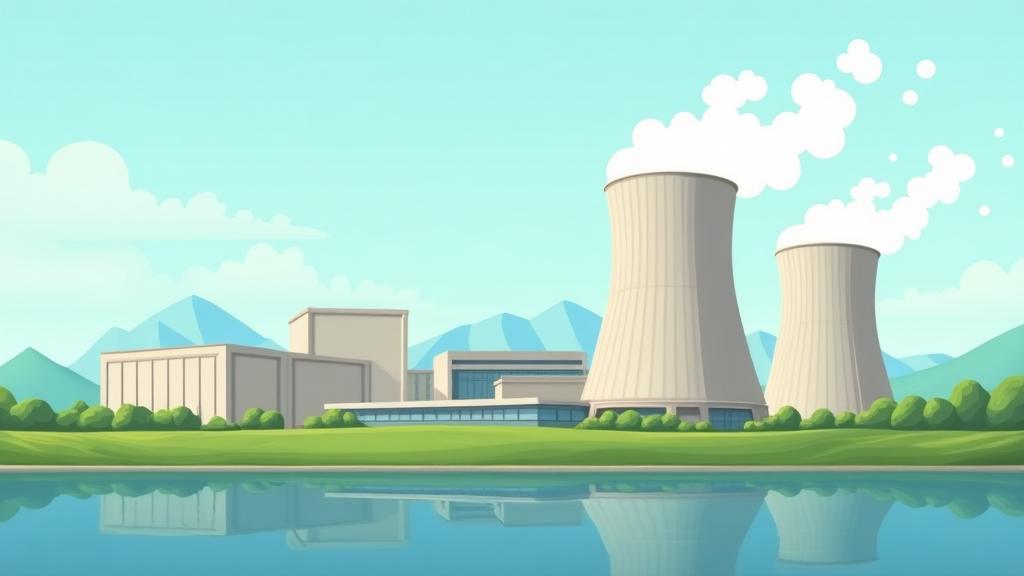
A Familiar Scene: Power Cuts and Pollution
If you’ve ever lived in a small town or even in the outskirts of a city, you probably know what it feels like to sit in the dark during power cuts. Fans stop, fridges get warm, and life slows down. On the other hand, big cities are constantly choking on smoke from coal plants and fuel-based industries. So, what’s the middle path? India is now eyeing nuclear energy as one of the ways to clean things up without sacrificing power needs.
Now, the government is working on something big—changing the rules around nuclear energy to make it easier for foreign companies to come and invest. These updates to the 2010 law may not sound exciting at first, but they could play a huge role in powering India’s future in a cleaner, more stable way.
What Went Wrong with the Old Law?
Back in 2010, after the Bhopal gas disaster memories were still fresh, India made a strict law that said if there’s a nuclear accident, even the equipment supplier will be held liable. It made sense at the time—nobody wanted another disaster. But the law also scared away big global players like General Electric and Westinghouse. Why would they risk it when other countries had more balanced rules?
That’s where India got stuck. We wanted nuclear energy but made the rules so strict that no one wanted to help us build it.
So, What’s Changing Now?
The new idea is simple: make the suppliers less scared. If something goes wrong, their liability would now be capped. Also, they’ll only be responsible for a limited time, and only up to the value of their contract. This is more in line with how things work in countries like France or the US, where plant operators—not the suppliers—are mainly responsible for safety.
By doing this, India hopes to invite foreign companies back, bring in fresh investments, and build more nuclear plants without too many legal hurdles.
The Big Target: 100 GW by 2047
Right now, India’s nuclear power capacity is somewhere around 8 GW. But the goal is 100 GW by 2047. That’s a huge jump, no doubt. To make that happen, experts say we’ll need close to ₹15 lakh crore in funding. That’s a mountain of money.
Good news is, big names like Reliance, Adani Power, Tata Power, and Vedanta are already talking about putting in $5 billion each. If all goes well, we might just hit the target—but only if the red tape is reduced and partnerships are encouraged.
Global Bonds: It’s Not Just About Power
This reform isn’t just about watts and megawatts. It’s also about diplomacy. If India becomes easier to work with, countries like the US will be more willing to team up. This means not just reactors, but also technology sharing, training, and maybe even cleaner exports.
India’s goal of taking trade with the US from $191 billion to $500 billion by 2030? This reform could help move that needle in the right direction.
Hold On, What About Safety?
Let’s not get carried away. Cutting supplier liability doesn’t mean we should take safety lightly. Nuclear energy is clean, yes, but it’s also risky if mismanaged. We’ve seen what happened in Fukushima and Chernobyl. Even if those were decades ago, they serve as lessons.
So, while making things easier for investors, India also needs to keep strict checks in place. There has to be transparency, regular inspections, and accountability. Otherwise, public trust will vanish in a flash.
What I Think: Not Perfect, But Needed
Honestly, I think this move is more of a necessity than a bold experiment. India needs cleaner energy, and coal won’t take us there. Solar and wind are growing fast, but they have limits too. Nuclear energy, when done right, can fill the gap.
But we have to balance growth with safety. We can’t afford shortcuts. If these reforms are implemented carefully—with solid safety nets—then I believe we’re heading in the right direction.
If you like this blog you may interest in clean energy, Check out our blog The Future of Solar Energy: Solar Futures and Predictions 2025

No comments yet. Be the first to comment!